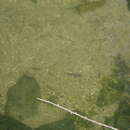Diagnostic Description
provided by Fishbase
Distinguished from all other species of Gobio by the following characters: 36-39 scales in the lateral line, 3 scales below the lateral line, distance between pectoral and ventral fin is greater than ventral anal distance, preorbital distance is short and the head is wide (Ref. 57030). Other diagnostic characters that separate this species from its congeners in Europe include: scale rows between lateral line and dorsal origin usually 5½ ;scale rows around caudal peduncle 12-14; scales between anus and anal origin 4-5; breast scaled forward at most to posterior extremity of pectoral-fin base; interorbital area flat to slightly convex; head length 25-28% SL; head depth 62-72% HL; eye diameter 1.2-1.8 times in interorbital distance; caudal peduncle depth 1.6-2.0 times in its length; midlateral blotches contrasted, posterior ones with sharp margin (Ref. 59043).
Morphology
provided by Fishbase
Dorsal spines (total): 2 - 3; Dorsal soft rays (total): 7; Analspines: 2 - 3; Analsoft rays: 6
Trophic Strategy
provided by Fishbase
Occurs in streams and rivers with clear water, gravel or sandy bottoms (Ref. 57030). Also inhabits slow moving lowland waters with gravel, sandy and clayey bottoms (Ref. 57030). Feeds mainly on Chironomidae larvae, Trichoptera larvae and terrestrial invertebrates (Ref. 57821).
- Recorder
- Grace Tolentino Pablico
Biology
provided by Fishbase
Occurs in streams and rivers with clear water, gravel or sandy bottoms (Ref. 57030). Also inhabits slow moving lowland waters with gravel, sandy and clay bottoms (Ref. 57030) and streams in foot hills with moderate current and with sand or gravel bottom (Ref. 59043).
Iberian gudgeon: Brief Summary
provided by wikipedia EN
Iberian gudgeon (Gobio lozanoi) is a species of gudgeon, a small freshwater in the family Cyprinidae. It is widespread only in the Iberian Peninsula where it is indigenous in the Ebro and Bidasoa drainage, and in France in the Adour drainage, as well as Andorra. It has been introduced throughout the Iberian Peninsula, including Portugal, It is a freshwater demersal fish, up to 11.9 cm long.
Named in honor of Luis Lozano Rey (1878-1958), University of Madrid, for his contribution to the knowledge of Iberian freshwater fishes.
- license
- cc-by-sa-3.0
- copyright
- Wikipedia authors and editors

